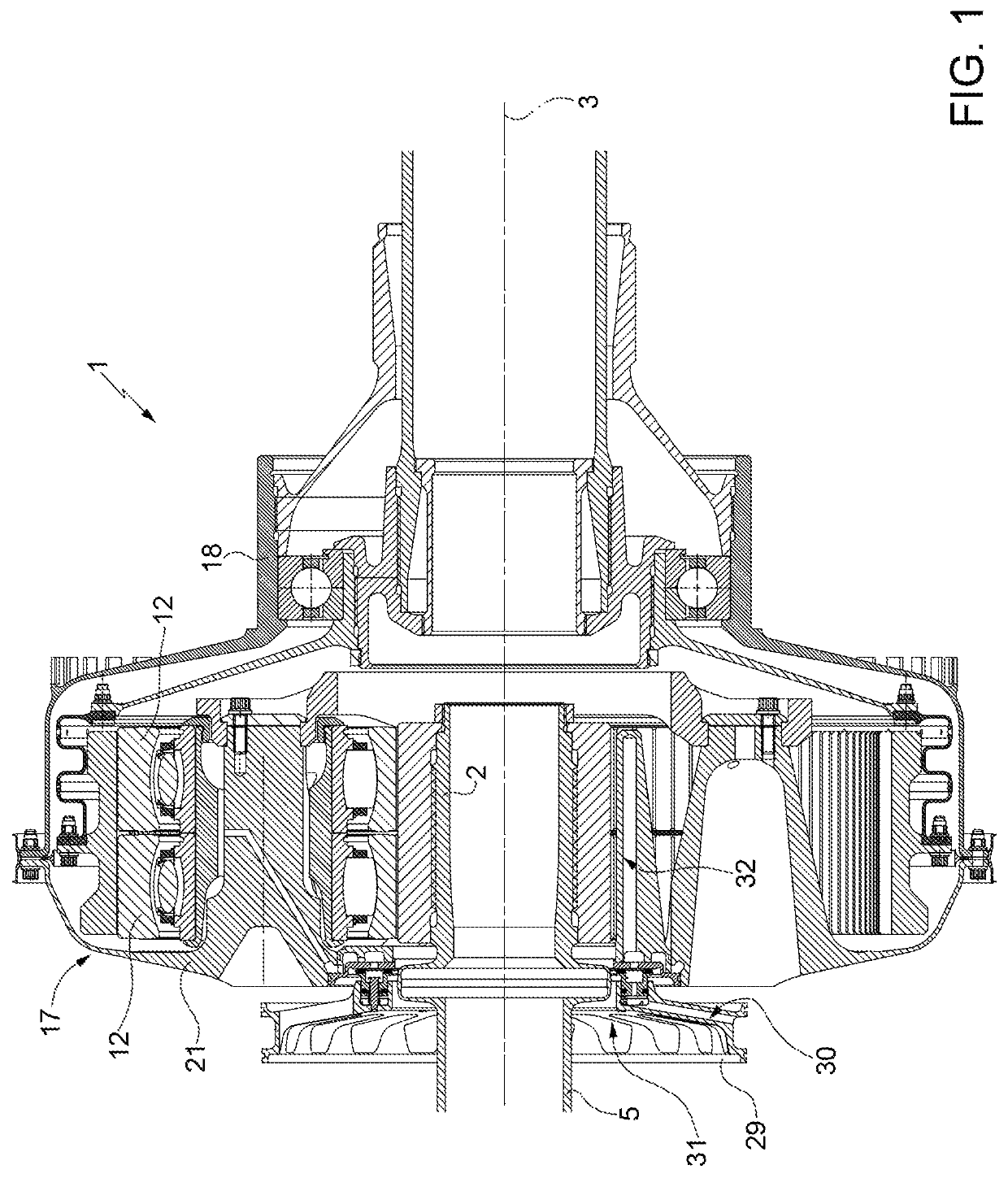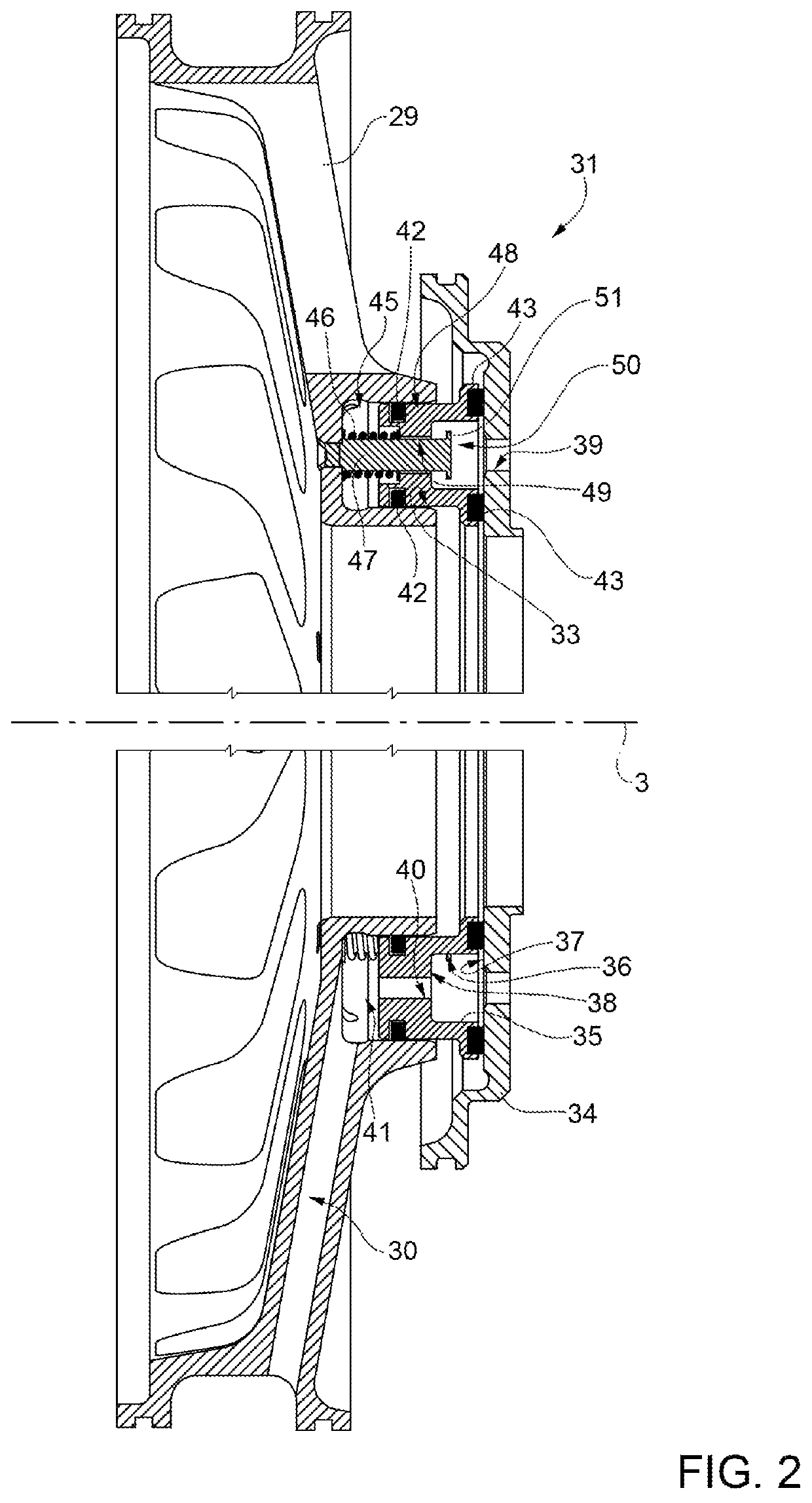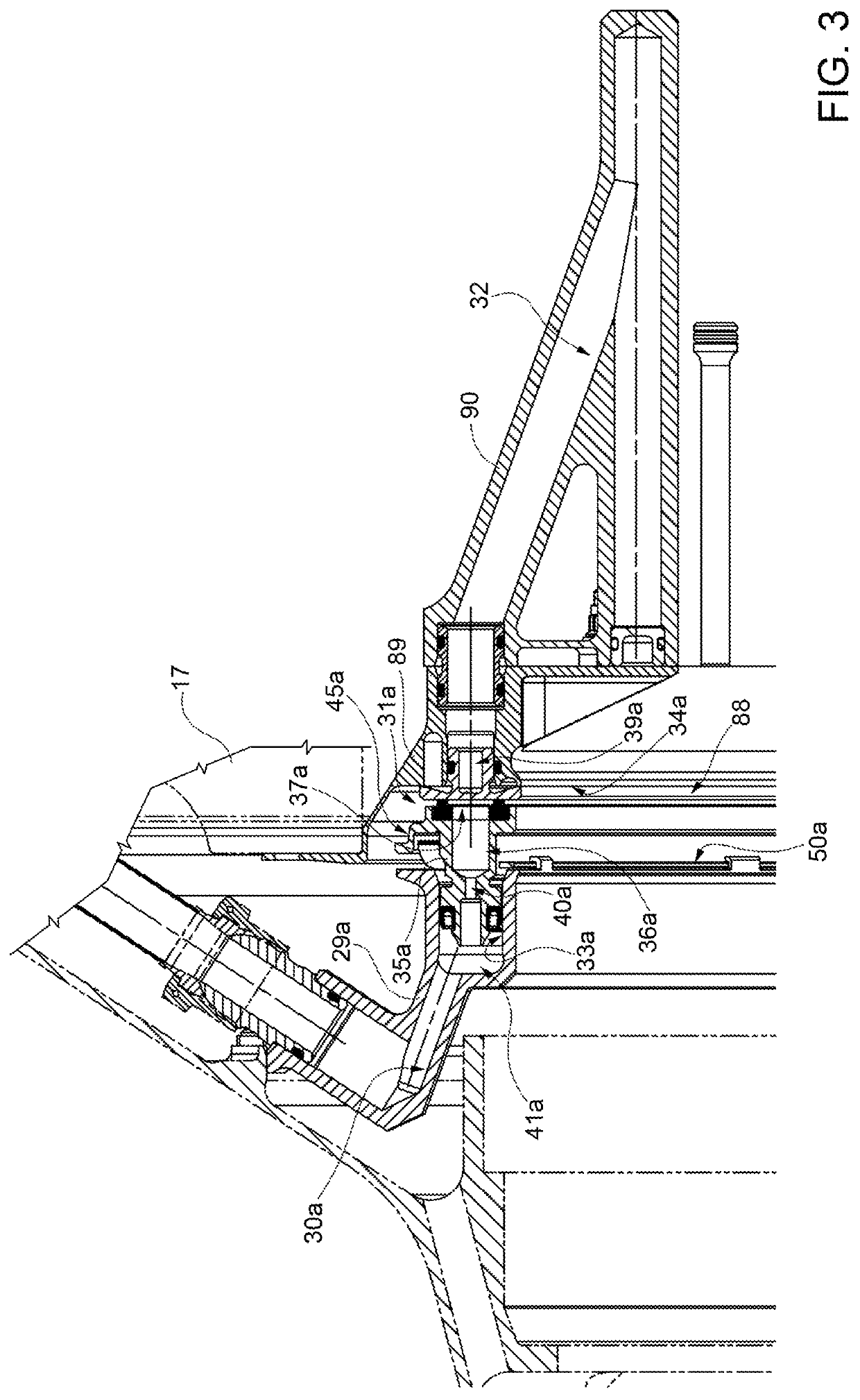Oil transfer assembly, to let lubricating oil flow from a stationary part to a rotating part, in particular for an epicyclic transmission
a technology of oil transfer and rotating parts, which is applied in the direction of gear lubrication/cooling, adjustment joints, pipe joints, etc., can solve the problems of insufficient oil transfer systems described above, inconsiderable risk of damage to seals, correct, etc., and achieves the effect of simple and affordabl
- Summary
- Abstract
- Description
- Claims
- Application Information
AI Technical Summary
Benefits of technology
Problems solved by technology
Method used
Image
Examples
Embodiment Construction
[0016]With reference to FIG. 1, numeral 1 indicates an epicyclic transmission, in particular for aeronautic applications, comprising a pinion 2, which is rotary about an axis 3 and is connected to a transmission shaft 5 in an angularly fixed manner.
[0017]Gearing 1 also comprises a plurality of planet wheels 12, supported, in a manner not described in detail, by planet-carrier 17, which is rotating about axis 3 and, preferably, is connected to a transmission member 18 in an angularly fixed manner.
[0018]The planet-carrier 17 is defined by a structure comprising an annular portion 21, which is coaxial to shaft 5, has a substantially plate-like shape, axially faces the planet wheels 12 and is spaced from shaft 5 and from pinion 2.
[0019]The planet-carrier 17 axially faces a structure 29 which is fixed and has one or more channels 30 defining an inlet for receiving lubricating oil which is pressurized from a reservoir (not illustrated) by one or more pumps (not illustrated). In particular...
PUM
 Login to View More
Login to View More Abstract
Description
Claims
Application Information
 Login to View More
Login to View More - R&D
- Intellectual Property
- Life Sciences
- Materials
- Tech Scout
- Unparalleled Data Quality
- Higher Quality Content
- 60% Fewer Hallucinations
Browse by: Latest US Patents, China's latest patents, Technical Efficacy Thesaurus, Application Domain, Technology Topic, Popular Technical Reports.
© 2025 PatSnap. All rights reserved.Legal|Privacy policy|Modern Slavery Act Transparency Statement|Sitemap|About US| Contact US: help@patsnap.com



